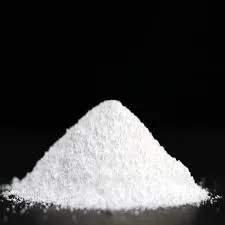Pharmaceutical Ingredients and Excipients Essential Components in Drug Formulation
Pharmaceutical ingredients play a crucial role in the development and manufacturing of medications. These ingredients can be categorized into two main groups active pharmaceutical ingredients (APIs) and excipients. Each category serves distinct functions in drug formulation and affects the overall efficacy, stability, and safety of the final product. This article delves into the significance of both APIs and excipients, their roles in pharmaceutical formulations, and current trends in the industry.
Active Pharmaceutical Ingredients (APIs)
Active pharmaceutical ingredients are the biologically active components of medications. They are responsible for the therapeutic effects that drugs provide. For example, in a common pain-reliever like ibuprofen, the API is ibuprofen itself, which targets pain pathways to alleviate discomfort. The development of APIs involves rigorous testing and validation to ensure safety and efficacy. Various factors influence the selection of an API, including its pharmacokinetics, pharmacodynamics, and the specific health conditions it aims to treat.
The process of API development encompasses several stages, beginning with drug discovery, where potential compounds are identified, screened, and optimized for activity. Following this, preclinical and clinical trials assess the compound's safety and effectiveness in humans. Once a drug demonstrates positive results, it can move forward to regulatory approval, which can vary by region but generally requires submission of extensive data on the API’s effects and safety.
Excipients The Unsung Heroes
While APIs are the star players in drug formulation, excipients often serve as the unsung heroes, playing vital supporting roles. Excipients are the inactive substances formulated alongside the active ingredients to create a final pharmaceutical product. The purpose of excipients can range from enhancing the stability and bioavailability of the drug to improving its aesthetic qualities or facilitating its delivery within the body.
Common types of excipients include binders, diluents, fillers, preservatives, flavoring agents, and solvents. For instance, lactose is commonly used as a filler in tablets, while polyethylene glycol may act as a solvent in liquid formulations. Each excipient is selected based on its compatibility with the API, its impact on drug performance, and the desired characteristics of the final product.
Importance of Formulation and Compatibility
pharmaceutical ingredients and excipients

The formulation of a drug, which includes the right combination of APIs and excipients, is critical to achieving the desired therapeutic effect. The interaction between ingredients can significantly affect the drug’s stability, release characteristics, and overall bioavailability. For instance, certain excipients can enhance the solubility of poorly water-soluble APIs, improving their absorption in the gastrointestinal tract.
Furthermore, the choice of excipients can influence shelf-life and storage conditions. Incompatible components can lead to degradation, rendering the medication ineffective or even harmful. Thus, understanding the physicochemical properties of both APIs and excipients is essential for pharmaceutical scientists to design effective formulations.
Current Trends in Pharmaceutical Ingredients and Excipients
The pharmaceutical industry is witnessing several emerging trends that impact the development of APIs and excipients. One significant trend is the shift towards more personalized medicine, which necessitates the formulation of drugs tailored to individual patient needs. This customization often requires innovative excipients that can accommodate varying dosages and delivery mechanisms.
Another trend is the focus on sustainability and environmental impact. Manufacturers are increasingly seeking excipients derived from renewable resources and biodegradable materials. This emphasis aligns with global efforts toward reducing pharmaceutical waste and enhancing the environmental profile of drug production.
Moreover, advancements in technology, such as 3D printing, are opening new avenues for drug manufacturing. This technology allows for the precise layering of APIs and excipients, enabling the creation of complex dosage forms that can enhance patient adherence and therapeutic outcomes.
Conclusion
In summary, the intricate interplay between active pharmaceutical ingredients and excipients is fundamental to the development of effective and safe medications. As the pharmaceutical industry evolves, ongoing research and innovation in both APIs and excipients will continue to shape the future of drug formulation, with a growing emphasis on personalized medicine, sustainability, and technological advancements. Understanding these components is essential for professionals in the field, as they work towards delivering better therapeutic solutions to patients worldwide.

